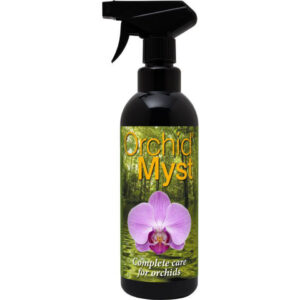Oncidium Orchid Care
1. Lighting Requirements
Light Intensity:
- Bright, indirect light is essential. Oncidiums thrive in dappled sunlight or filtered light conditions.
Ideal locations:
- East- or west-facing windows. A south-facing window with sheer curtains can also work.
Signs of Proper Lighting:
- Leaves should be light green. Dark green leaves indicate insufficient light, while yellowing or scorched leaves suggest too much direct sunlight.
2. Temperature
- Daytime: 18–24°C (65–75°F)
- Nighttime: 13–18°C (55–65°F)
Tolerance:
- Oncidiums can handle brief temperature fluctuations but prefer stable environments. Avoid exposing them to cold drafts or excessive heat.
3. Humidity
- Ideal humidity levels are between 50% and 70%.
- Use a humidity tray (a shallow tray filled with pebbles and water) or a room humidifier if the environment is dry.
- Maintain good air circulation to prevent fungal and bacterial issues.
4. Watering
Frequency:
- Allow the potting medium to dry slightly between watering.
- Water once every 12-14 days in cooler months and once a week in warmer months.
Method:
- Water thoroughly until excess water drains from the pot. Avoid letting the plant sit in standing water.
Signs of Over watering:
- Yellowing leaves, mushy roots, or root rot.
Signs of Under watering:
- Shriveling pseudo bulbs or wrinkled leaves.
5. Potting Medium and Re-potting
Medium:
- Use a well-draining mix such as bark, sphagnum moss, or a mix of fine
bark and perlite.
Re-potting Frequency:
- Every 1–1.5 years or when the medium starts breaking down.
Pot Choice:
- Clear plastic pots are ideal as they allow you to monitor root health.
Ensure the pot has drainage holes.
6. Feeding
 Frequency:
Frequency:
- Use a good quality orchid fertiliser like ‘Growth Technology orchid myst’. (available to order via email).
- During active growth (spring and summer) and rest periods (autumn and winter): 2-3 times a week preferably in the morning. Misting the leaves with full coverage and any top aerial roots.
Flush the Medium:
- Once a month, flush the potting medium with plain water to remove fertiliser salts.
7. Flowering
- Oncidiums typically bloom once a year, but with optimal care, some varieties may bloom more frequently.
Triggers for Blooming:
- Adequate light is crucial.
- A slight drop in nighttime temperature in autumn can encourage blooming.
Post-Bloom Care:
- After flowers fade, cut the flower spike just above a node to encourage secondary blooms or at the base if the spike is completely spent.
8. Pruning and Maintenance
- Remove yellowing or dead leaves.
- Inspect for pests such as spider mites, aphids, or scale, Use a plant-friendly pesticide regularly (available to order via email) and wipe leaves with insecticidal soap or neem oil.
- Clean leaves occasionally with a damp cloth to remove dust.
9. Common Problems
Pseudo-bulb Shriveling:
- Usually caused by under watering or potting medium that doesn’t retain enough moisture.
Leaf Spots:
- May indicate fungal or bacterial infection. Ensure proper air circulation
and avoid wetting leaves.
No Flowers:
- Check light levels and temperature. Insufficient light is the most
common cause of non-flowering.
10. Special Tips
Outdoor Placement:
- In temperate climates, Oncidiums can be placed outdoors in summer, but ensure they are protected from direct midday sun and heavy rains.
Rest Period:
- After blooming, Oncidiums may enter a rest phase. During this time, reduce watering slightly but maintain humidity and light levels.
By following these guidelines, your Oncidium orchid will thrive and reward you with its beautiful and delicate blooms. With proper care, these orchids can be a stunning, long-lasting addition to your home or garden!
If you require any additional help message us on:
Instagram at cdsplants_
Facebook at CDS Plants
Email at dcplants10@gmail.com.
Happy Growing!!
